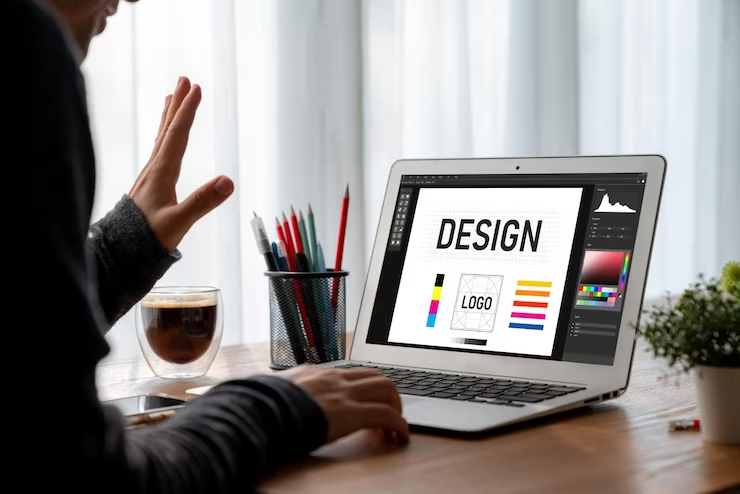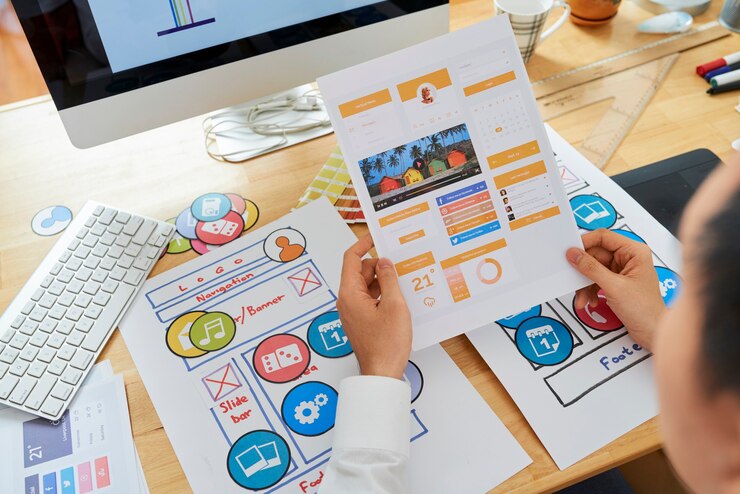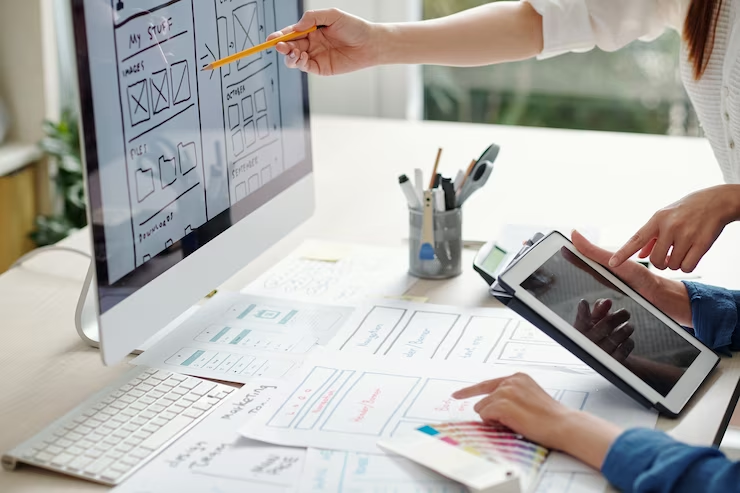
Graphic Design
Graphic design is the art and practice of visual communication that uses elements such as typography, imagery, color, and layout to convey ideas, information, and emotions. Graphic designers leverage their creativity and technical skills to create visual solutions that captivate, inform, and resonate with a target audience. This multifaceted discipline spans various mediums, including print, digital, and environmental design.
- Typography
- Color Theory
- Layout and Composition
- Imagery and Iconography
Importance of Graphic Design
graphic design transcends mere aesthetics; it is a language that speaks to the visual senses, conveying messages, invoking emotions, and leaving lasting impressions. As businesses and brands navigate the intricacies of visual communication, the artistry and strategic prowess of graphic design remain indispensable in shaping a compelling and memorable narrative



User Experience Design
User Experience Design is a multidisciplinary approach focused on creating meaningful and enjoyable interactions between users and digital interfaces. It encompasses the entire journey a user takes, from their first encounter with a product or service to the ongoing relationship. UXD integrates elements of psychology, design, and technology to optimize usability, accessibility, and overall satisfaction.
- User Research
- Information Architecture
- Interaction Design
- Visual Design
User Experience Design By Codepanacea
User Experience Design is not merely a phase in product development; it's a holistic philosophy that places the user at the center of the design process. By prioritizing user needs, understanding behaviors, and fostering delightful interactions, UXD paves the way for digital experiences that resonate, engage, and stand the test of evolving user expectations.



Responsive Web Design
Responsive Web Design is an approach to web design that ensures a website's layout, images, and other elements adapt dynamically to different screen sizes and devices. Instead of creating separate designs for each device, RWD employs flexible grids and layouts, fluid images, and media queries to create a single, adaptable design that responds to the user's device, providing an optimal viewing and interaction experience.
- Mobile-Friendly Websites
- Cross-Browser Compatibility
- E-Commerce Platforms
- Blog and Content Platforms
Importance of Responsive Web Design
Responsive Web Design is not just a trend; it's a fundamental approach that aligns with the dynamic nature of the digital landscape. By embracing the principles of flexibility, adaptability, and user-centric design, websites can thrive in an environment where user expectations evolve, and diverse devices shape the way we interact with the online world.



Landing Page Design
A landing page is a standalone web page created with a specific purpose in mind – to prompt a visitor to take a desired action. Unlike typical website pages, landing pages are streamlined, focused, and designed to guide users toward a single call-to-action (CTA). Landing Page Design involves a meticulous blend of aesthetics, content, and functionality, all centered around achieving a particular goal
- Clear and Compelling Headline
- Engaging Visuals
- Concise and Persuasive Copy
- Strategic Use of White Space
Best Work for Landing Page Design
Landing Page Design is a strategic art form that transcends aesthetics, focusing on creating purposeful and conversion-driven experiences. By adhering to best practices, embracing emerging trends, and understanding the unique needs of the target audience, landing pages become powerful tools in the marketer's arsenal, transforming clicks into conversions and visitors into valued customers.



Product Design
Product Design is the process of conceptualizing, creating, and refining products with a focus on user experience, functionality, and visual appeal. It involves a multidisciplinary approach that integrates elements of industrial design, engineering, ergonomics, and user psychology. Product designers strive to create solutions that not only meet the needs of users but also elevate the overall experience, whether it's a physical object or a digital interface.
- User-Centered Approach
- Iterative Prototyping
- Material Selection
- Functional Ergonomics
Importance of Responsive Web Design
Product Design is not just about creating visually appealing objects; it's about crafting meaningful and user-centric experiences. As technology evolves and consumer expectations shift, the role of product design becomes even more pivotal in shaping the future of innovation and enhancing our daily lives.


OUR MISSION
To give a voice to your brand on the web through Codepanacea UI / Ux designing, development, latest digital marketing solutions, cloud computing and insights.
